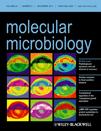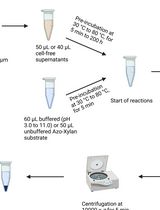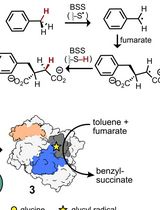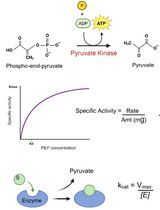- EN - English
- CN - 中文
Acetyl-coenzyme A Synthetase (Acs) Assay
乙酰辅酶A合成酶(ACS)的活性测定
发布: 2012年09月05日第2卷第17期 DOI: 10.21769/BioProtoc.256 浏览次数: 17523
Abstract
Acetyl-coenzyme A synthethase (Acs, E.C.6.2.1.1) is an acetate activating enzyme widely represented in nature from bacteria to human. Its function is important for cellular catabolism, especially in order to support microbial growth at low concentrations of acetate (<10 mM) (Castano Cerezo et al., 2011; Castano Cerezo et al., 2009;Renilla et al., 2012). In this protocol, a continuous coupled enzymatic assay for Acs activity is described. Product formation is followed spectrophotometrically by the formation of NADH. The protocol is tailored for E. coli’s Acs, but it can be adapted to assay Acs in any other organism.
The acetyl-coenzyme A synthetase (Acs) assay was first described by Brown et al. (1977). Acs activity is measured using an enzymatic method coupled to malate dehydrogenase (Mdh) and citrate synthase (Cs):
(Acs) acetate + CoASH + ATP -> acetyl-CoA + AMP
(Cs) acetyl-CoA + oxaloacetate -> citrate + CoASH
(Mdh) L-malate + NAD+ -> oxaloacetate + NADH
Net reaction: Acetate + ATP + L-malate + NAD+ -> citrate + AMP + NADH
Under the assay conditions, Mdh and Cs activities are in excess and the rate of NADH formation is limited by Acs activity.
Materials and Reagents
- Extraction
- Potassium phosphate buffer 65 mM (pH 7.5) (Sigma-Aldrich, catalog number: P5379 )
- Cultured cells (approx. 1010 cells) (e.g., for Escherichia coli cells grown in M9 glucose minimal medium, 1 ml of OD600 1 corresponds to approx. 6 x 108 cells)
- Enzyme activity
- 100 mM Tris-HCl buffer (pH 7.8) (Sigma-Aldrich, catalog number: T1502 )
- 20 mM ATP (Sigma-Aldrich, catalog number: A3377 )
- 2 mM Coenzyme A trilithium salt (CoASH) (Sigma-Aldrich, catalog number: C3019 )
- 60 mM β-nicotinamide adenine dinucleotide hydrate (NAD+) (Sigma-Aldrich, catalog number: N7004 )
- 50 mM MgCl2 (Panreac Applichem, catalog number: 131396 )
- 50 mM L-malate (Sigma-Aldrich, catalog number: 02288 )
- 1 M sodium acetate trihydrate (Sigma-Aldrich, catalog number: S8625 )
- 50 U/ml malate dehydrogenase (Mdh) from bovine heart (Sigma-Aldrich, catalog number: M9004 )
- 25 U/ml citrate synthase from porcine heart (Cs) (Sigma-Aldrich, catalog number: C3260 )
Reagents 2-4 were prepared in milliQ water and components 5-7 in Tris-HCl buffer (100 mM, pH 7.8). All concentrated stocks (1-7) were prepared in advance and stored at -20 °C. Enzymes (8-9) were stored at 4-6 °C (following the instructions of the manufacturer) and diluted in Tris-HCl buffer (100 mM, pH 7.8) immediately before being used. - 96 well flat bottom, non-treated, non-sterile transpartent plates
- Ice-cold phosphate buffer
Equipment
- Refrigerated benchtop centrifuge (Eppendorf, catalog number: 5801 R )
- Ultrasonic homogenizer (Sonics & Materials Inc., Vibra Cell VC 375) equipped with a 3 mm diameter probe
- Spectrophotometric plate reader (Bio-Tek)
- Novaspec Plus spectrophotometer (Amersham Bioscience GE Healthcare Europe GmbH)
- Non-sterile transpartent plates
- Water-ice bath
Procedure
文章信息
版权信息
© 2012 The Authors; exclusive licensee Bio-protocol LLC.
如何引用
Castaño-Cerezo, S., Bernal, V. and Cánovas, M. (2012). Acetyl-coenzyme A Synthetase (Acs) Assay. Bio-protocol 2(17): e256. DOI: 10.21769/BioProtoc.256.
分类
生物化学 > 蛋白质 > 活性
您对这篇实验方法有问题吗?
在此处发布您的问题,我们将邀请本文作者来回答。同时,我们会将您的问题发布到Bio-protocol Exchange,以便寻求社区成员的帮助。
提问指南
+ 问题描述
写下详细的问题描述,包括所有有助于他人回答您问题的信息(例如实验过程、条件和相关图像等)。
Share
Bluesky
X
Copy link













